SIDEWAYS (Alexander Payne, 2004)
MoMA Film
Museum of Modern Art
11 West 53rd St. between Fifth & Sixth Aves.
Wednesday, August 24, 7:00; Friday, August 26, 4:00
Series runs August 22-30
Tickets: $10, in person only, may be applied to museum admission within thirty days, same-day screenings free with museum admission, available at Film and Media Desk
212-708-9400
www.moma.org
www2.foxsearchlight.com/sideways
 Eating, drinking, and going to the movies — three great things that go great together. In 2007, Dieter Kosslick, the Culinary Cineaste and director of the Berlin International Film Festival, introduced the series “Eat, Drink, See Movies” to the Berlinale, pairing films with specific meals. The German Slow Foodie has now put together a similar program for the Museum of Modern Art, teaming up with Gabriel Kreuther, executive chef of the Modern, to offer special drinks and dishes to accompany screenings of food-related films from MoMA’s vast library. First up is Stanley Tucci’s Big Night, screening tonight at 7:00, with Sepia Risotto with Gold Leaf added to the Modern’s menu. For the merlot-intensive Sideways (August 24 & 26), the Modern will be serving “Three Expressions of Pinot Noir, Paired with Charcuterie,” including Domaine Cornu “Les Barigards” with Vella Dry Jack Cheese, Becker Pinot Noir Estate with Iberico Ham, and Copain Gouttes d’Art with Quail Terrine. Alexander Payne’s fourth film, following the underseen Citizen Ruth, the excellent Election, and the overrated About Schmidt, is fabulously entertaining from start to finish, a smart, inventive, very funny dark comedy about friendship and love set in California wine country. Paul Giamatti stars as Miles, a schlumpy wine connoisseur who is having trouble getting over his divorce and the failure of his massive novel to get published. His best friend, Jack (Thomas Haden Church), is getting married, so the two head off on a road trip, with Miles looking forward to sampling fine wine, and Jack anticipating sampling fine women. While Jack finds what he is looking for in Stephanie (Sandra Oh, who was married to Payne at the time), Miles seems hell-bent on not allowing himself to enjoy life, even as a beautiful woman with a deep appreciation of the grape (the excellent Virginia Madsen in what should have been a career-redefining performance) shows an interest in him. You definitely do not have to be a wine drinker to fall in love with this marvelous movie, one of the best of 2004; it was nominated for Best Director, Best Picture, Best Supporting Actress (Madsen), and Best Supporting Actor (Haden Church), and screenwriters Jim Taylor and Payne won for Best Adapted Screenplay.
Eating, drinking, and going to the movies — three great things that go great together. In 2007, Dieter Kosslick, the Culinary Cineaste and director of the Berlin International Film Festival, introduced the series “Eat, Drink, See Movies” to the Berlinale, pairing films with specific meals. The German Slow Foodie has now put together a similar program for the Museum of Modern Art, teaming up with Gabriel Kreuther, executive chef of the Modern, to offer special drinks and dishes to accompany screenings of food-related films from MoMA’s vast library. First up is Stanley Tucci’s Big Night, screening tonight at 7:00, with Sepia Risotto with Gold Leaf added to the Modern’s menu. For the merlot-intensive Sideways (August 24 & 26), the Modern will be serving “Three Expressions of Pinot Noir, Paired with Charcuterie,” including Domaine Cornu “Les Barigards” with Vella Dry Jack Cheese, Becker Pinot Noir Estate with Iberico Ham, and Copain Gouttes d’Art with Quail Terrine. Alexander Payne’s fourth film, following the underseen Citizen Ruth, the excellent Election, and the overrated About Schmidt, is fabulously entertaining from start to finish, a smart, inventive, very funny dark comedy about friendship and love set in California wine country. Paul Giamatti stars as Miles, a schlumpy wine connoisseur who is having trouble getting over his divorce and the failure of his massive novel to get published. His best friend, Jack (Thomas Haden Church), is getting married, so the two head off on a road trip, with Miles looking forward to sampling fine wine, and Jack anticipating sampling fine women. While Jack finds what he is looking for in Stephanie (Sandra Oh, who was married to Payne at the time), Miles seems hell-bent on not allowing himself to enjoy life, even as a beautiful woman with a deep appreciation of the grape (the excellent Virginia Madsen in what should have been a career-redefining performance) shows an interest in him. You definitely do not have to be a wine drinker to fall in love with this marvelous movie, one of the best of 2004; it was nominated for Best Director, Best Picture, Best Supporting Actress (Madsen), and Best Supporting Actor (Haden Church), and screenwriters Jim Taylor and Payne won for Best Adapted Screenplay.
Kosslick’s series continues through August 30 with such tasty treats as David Gelb’s Jiro Dreams of Sushi on August 23 (followed by a panel discussion with Kosslick, Kreuther, Ruth Reichl, and chef Michael Romano; the Modern, meanwhile, will be serving Crudo Trio), Sandra Nettlebeck’s Mostly Martha (Vitello Tonato), Marcel Carne’s Harvest (Eckerton Hill Farm Heirloom Tomato Terrine), Gabriel Axel’s Babette’s Feast (Blini with Crème Fraîche and American Sturgeon Caviar), Brad Bird’s Ratatouille (Ratatouille Panna Cotta with Yellow Tomato Coulis), and D. A. Pennebaker’s Kings of Pastry (Trio of Desserts), among other cinematic culinary delights.
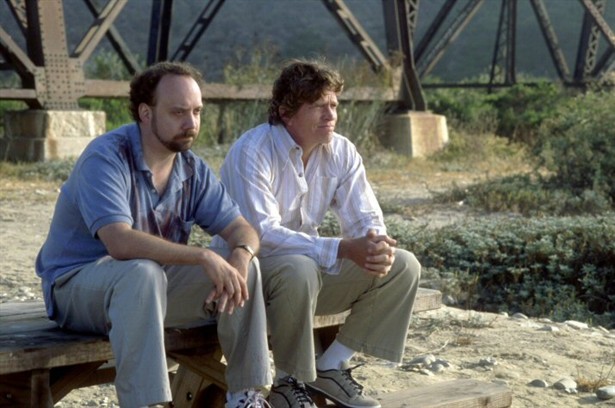
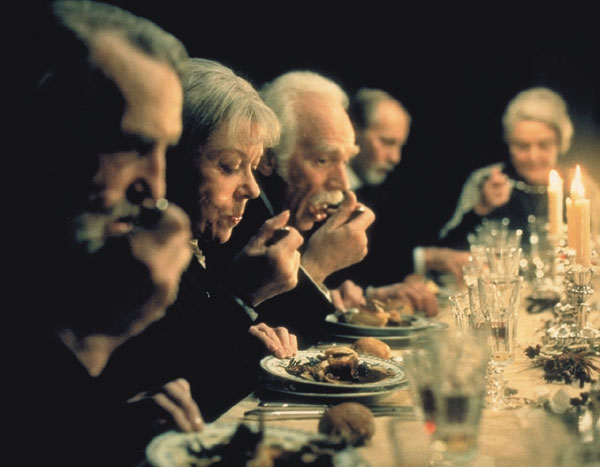
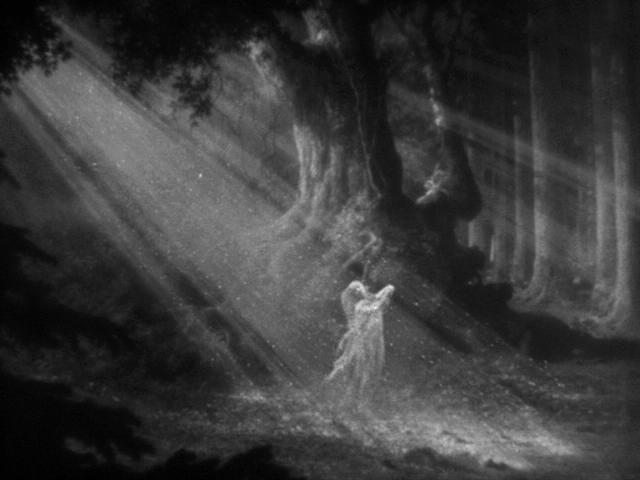
 Max Reinhardt and William Dieterle’s 1935 adaptation of Shakespeare’s A Midsummer Night’s Dream is one freakishly weird flick. In a misty forest, fairies go around sprinkling love potions on sleeping humans, creating mixed-up relationships that even venture out into the realm of bestiality. “The course of true love never did run smooth,” Lysander tells Hermia, and that sums up this star-studded screwball comedy of a sort. Warner Bros. put together quite a lineup for this big-time production, with plenty of strange casting choices that end up working rather splendidly. James Cagney prances about as Bottom, Dick Powell plays Lysander, Olivia de Havilland makes her film debut as Hermia, Joe E. Brown is Flute, Billy Barty plays Mustardseed, and a teenage Mickey Rooney offers a delirious take on Puck, howling at the moon with sheer glee. The wacky movie also features Ian Hunter, Arthur Treacher, Victor Jory, and Anita Louise as the fairy queen Titania. A Midsummer Night’s Dream, which was nominated for four Oscars, including Best Picture, and won for Best Cinematography and Best Film Editing, will be screening August 11 at 4:30 and August 19 at 4:00 as part of MoMA’s “Hot and Humid: Summer Films from the Archives” series, which continues through September 7 with such seasonal dramas as Hou Hsiao-hsien’s A Summer at Grandpa’s, Federico Fellini’s I vitelloni, Ingmar Bergman’s Summer with Monika, André Téchiné’s Wild Reeds, Michelangelo Antonioni’s L’Avventura, Spike Lee’s Do the Right Thing, and Steven Spielberg’s Jaws.
Max Reinhardt and William Dieterle’s 1935 adaptation of Shakespeare’s A Midsummer Night’s Dream is one freakishly weird flick. In a misty forest, fairies go around sprinkling love potions on sleeping humans, creating mixed-up relationships that even venture out into the realm of bestiality. “The course of true love never did run smooth,” Lysander tells Hermia, and that sums up this star-studded screwball comedy of a sort. Warner Bros. put together quite a lineup for this big-time production, with plenty of strange casting choices that end up working rather splendidly. James Cagney prances about as Bottom, Dick Powell plays Lysander, Olivia de Havilland makes her film debut as Hermia, Joe E. Brown is Flute, Billy Barty plays Mustardseed, and a teenage Mickey Rooney offers a delirious take on Puck, howling at the moon with sheer glee. The wacky movie also features Ian Hunter, Arthur Treacher, Victor Jory, and Anita Louise as the fairy queen Titania. A Midsummer Night’s Dream, which was nominated for four Oscars, including Best Picture, and won for Best Cinematography and Best Film Editing, will be screening August 11 at 4:30 and August 19 at 4:00 as part of MoMA’s “Hot and Humid: Summer Films from the Archives” series, which continues through September 7 with such seasonal dramas as Hou Hsiao-hsien’s A Summer at Grandpa’s, Federico Fellini’s I vitelloni, Ingmar Bergman’s Summer with Monika, André Téchiné’s Wild Reeds, Michelangelo Antonioni’s L’Avventura, Spike Lee’s Do the Right Thing, and Steven Spielberg’s Jaws.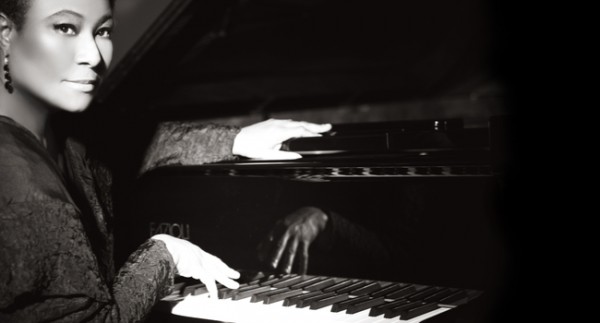
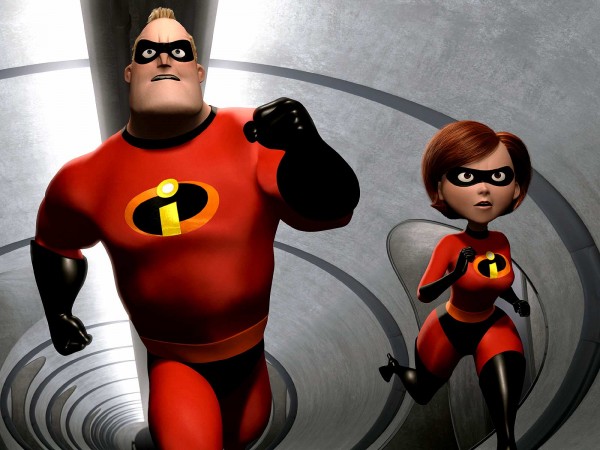
 The Incredibles, which nabbed the Best Animated Feature Oscar, is yet more fun from Pixar, John Lasseter’s remarkably creative studio that previously brought us Toy Story, A Bug’s Life, Monsters Inc.., and Finding Nemo. After the crime-fighting family the Incredibles are sued into early retirement and given a new identity in harmless suburbia, Bob/Mr. Incredible (Craig T. Nelson) can’t stop protecting the world from evildoers, sneaking away from his suspicious wife, Helen/Elastigirl (Holly Hunter), to work with Lucius/Frozone (Samuel L. Jackson) in defeating evil. But he meets more than he bargained for in Syndrome (Jason Lee), a piece of his past resurrected to destroy him. Other recognizable voices include Wallace Shawn as Gilbert Huph, writer Sarah Vowell as Violet, John Ratzenberger as Underminer, and Elizabeth Peña as Mirage; writer/director Brad Bird (The Iron Giant) voices fashion designer Edna ‘E’ Mode. The Incredibles kicks off the big finale of MoMA’s Pixar Revisited series, which also includes the terrific Ratatouille (Brad Bird, 2007), screening with Gary Rydstrom’s short Lifted on July 8 at 8:00; the thrilling Up (Pete Docter, 2009), being shown with the Peter Sohn short Partly Cloudy on July 9 at 5:00; and the brilliant Wall-E (Andrew Stanton, 2008), screening with the Doug Sweetland short Presto on July 9 at 8:00.
The Incredibles, which nabbed the Best Animated Feature Oscar, is yet more fun from Pixar, John Lasseter’s remarkably creative studio that previously brought us Toy Story, A Bug’s Life, Monsters Inc.., and Finding Nemo. After the crime-fighting family the Incredibles are sued into early retirement and given a new identity in harmless suburbia, Bob/Mr. Incredible (Craig T. Nelson) can’t stop protecting the world from evildoers, sneaking away from his suspicious wife, Helen/Elastigirl (Holly Hunter), to work with Lucius/Frozone (Samuel L. Jackson) in defeating evil. But he meets more than he bargained for in Syndrome (Jason Lee), a piece of his past resurrected to destroy him. Other recognizable voices include Wallace Shawn as Gilbert Huph, writer Sarah Vowell as Violet, John Ratzenberger as Underminer, and Elizabeth Peña as Mirage; writer/director Brad Bird (The Iron Giant) voices fashion designer Edna ‘E’ Mode. The Incredibles kicks off the big finale of MoMA’s Pixar Revisited series, which also includes the terrific Ratatouille (Brad Bird, 2007), screening with Gary Rydstrom’s short Lifted on July 8 at 8:00; the thrilling Up (Pete Docter, 2009), being shown with the Peter Sohn short Partly Cloudy on July 9 at 5:00; and the brilliant Wall-E (Andrew Stanton, 2008), screening with the Doug Sweetland short Presto on July 9 at 8:00.


